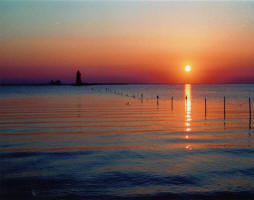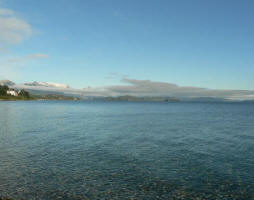- Regional water observation mechanism
- Regional Cooperation Assessment
- Water Quality Monitoring (JP)
- Water scarcity and drought (JP)
- Groundwater (JP)
- Waste water reuse (JP)
- Shared Water Resources Management (JP)
- Linking rural development and water management (JP)
- Waste management
- Water institutions
- Climate Change
- Floods
- Desalination
- Right to Water
- Irrigation
- Satellite data
- Water reports & data
- Hydrology
- Sanitation
- Gender and IWRM
- ArabWAYS
- Non-Revenue Water
- Virtual Water & Water Footprint
- WANA Water Panel
- Water Demand
- Water Governance
- Water Pricing
- Water accounts
- Water nexus Energy
- Geosciences
- Rural Management
 Review of Water Resources and Desalination Technologies
Review of Water Resources and Desalination Technologies
by James E. Miller, Materials Chemistry Department, Sandia National Laboratories: P.O. Box 5800, Albuquerque, NM 87185-1349 - SAND 2003-0800, Unlimited Release, Printed March 2003
--
Water shortages affect 88 developing countries that are home to half of the world’s population. In these places, 80-90% of all diseases and 30% of all deaths result from poor water quality. Furthermore, over the next 25 years, the number of people affected by severe water shortages is expected to increase fourfold. Low cost methods to desalinate brackish water and sea water can help reverse this destabilizing trend.
Desalination has now been practiced on a large scale for more than 50 years. During this time continual improvements have been made, and the major technologies are now remarkably efficient, reliable, and inexpensive. For many years, thermal technologies were the only viable option, and multi-stage flash (MSF) was established as the baseline technology. Multi-effect evaporation (MEE) is now the state-of-the-art thermal technology, but has not been widely implemented. With the growth of membrane science, reverse osmosis (RO) overtook MSF as the leading desalination technology, and should be considered the baseline technology. Presently, RO of seawater can be accomplished with an energy expenditure in the range of 11-60 kJ/kg at a cost of $2 to $4 per 1000 gallons. The theoretical minimum energy expenditure is 3-7 kJ/kg.
Since RO is a fairly mature technology, further improvements are likely to be incremental in nature, unless design improvements allow major savings in capital costs. Therefore, the best hope to dramatically decrease desalination costs is to develop “out of the box” technologies. These “out of the box” approaches must offer a significant advantage over RO (or MEE, if waste heat is available) if they are to be viable. When making these comparisons, it is crucial that the specifics of the calculation are understood so that the comparison is made on a fair and equivalent basis.
| Creator | by James E. Miller, Materials Chemistry Department, Sandia National Laboratories: P.O. Box 5800, Albuquerque, NM 87185-1349 - SAND 2003-0800, Unlimited Release, Printed March 2003 (email: isanche@sandia.gov) |
|---|---|
| Publisher | M. Kevin Price, Manager, U.S. Bureau of Reclamation, P.O. Box 25007, Denver Federal Center Denver, CO 80225-0007 |
| Type of document | Report |
| Rights | Public |
| File link | n/a |
| File link local |
|
| Source of information | Sandia National Laboratories |
| Keyword(s) | desalination, water shortages, water quality, brackish water, RO, |
| Subject(s) | ANALYSIS AND TESTS , CHARACTERISTICAL PARAMETERS OF WATERS AND SLUDGES , DRINKING WATER AND SANITATION : COMMON PROCESSES OF PURIFICATION AND TREATMENT , ENERGY , INFRASTRUCTURES , MEASUREMENTS AND INSTRUMENTATION , POLICY-WATER POLICY AND WATER MANAGEMENT , RISKS AND CLIMATOLOGY , SANITATION -STRICT PURIFICATION PROCESSES , SLUDGES , WATER QUALITY |
| Geographical coverage | n/a |
 you are not logged in
you are not logged in





